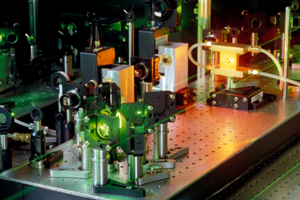
Semrock Optical Filters


The laser is unique among optical sources, having the unusual combination of narrow bandwidth, high intensity, extreme brightness, and optical coherence. Fifty years since its invention, it is used in a myriad of applications, from science & medicine to consumer products, entertainment, materials processing, and beyond. The optics industry, in general, has followed suit, improving performance, reducing production costs and miniaturizing components, helping to bring complex optical systems out of the lab and into the mainstream. But even with all of these accomplishments, controlling and manipulating the spectral properties of light is still paramount. While there are many available technologies, the thin-film dielectric filter still has several advantages, including high transmission, deep blocking, steep spectral edges, and high power damage threshold. These features are why thin-film filters are still an integral component in laser & optical systems today.
Semrock filters are designed to perform many of the key spectral control functions common to most laser & optical systems. Our MaxLine™ Laser-line Clean-up filters and MaxDiode™ Laser Clean-up filters eliminate unwanted laser modes and spontaneous emission from the most common laser sources when spectral purity is critical. StopLine® Notch filters filters eliminate only the laser light in applications where the laser light is undesirable, such as safety goggles for a laser surgeon. LaserMux™ laser combining filters allow multiple laser beams to be combined together and split apart with minimal distortion in multi-wavelength applications.
In Raman spectroscopy systems, which almost always use laser sources, RazorEdge® and EdgeBasic™ filters block the laser excitation light by a factor of over one million while still allowing the Raman scattered light at nearby wavelengths to pass with a high transmission, allowing these very faint signals to be detected with high signal-to-noise ratios. And our unsurpassed RazorEdge Dichroic filters let users direct a laser beam to a sample and see the scattered return while the laser light is eliminated, all with a single filter.
A New Class of Polarization Optics Designed Specifically for Lasers